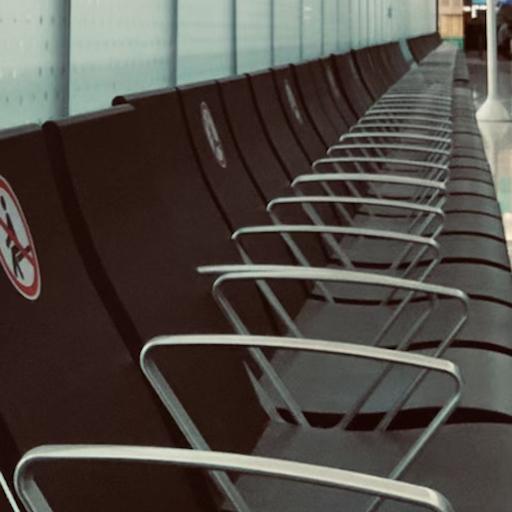10 pm in Madrid. It’s a searing hot July day even at this time, when constellations of crowds disperse into smaller clusters, trickling into restaurants for food and respite. From inside this Galician restaurant, the noise swells from a gentle clicking of cutlery to an ambient buzz. Royal blue-studded ceramic plates play off against the teak wood of the table and chairs, and exposed bulb pendants bask the brick walls in a spectral glow. Light, grassy Albariño wine swirls in glasses, and conversations flow. Among all this, the food arrives.

A classic Spanish tortilla: an omelette oozing golden yolk in such quantities that there surely isn’t enough bread to mop it up with. Galician octopus, known as pulpo a feira con cachelos—stewed octopus with potatoes—and grilled scallops served in their shell, drizzled with lemon. As is the Spanish tradition, they’re small plates meant for sharing; dishes that work best as complements to another.
We scoop up the paprika-coated octopus and potatoes; soak up the yolk with hunks of bread, and wash down the scallops with generous amounts of citrusy sauce. And for a moment, time stands still.
Such is the power of sides.
I’ve always rooted for the underdog. The supporting act. The sidekick. On screen, off screen. In daily life, in work, and in food.
Sure, there’s something impressive about a great joint of meat seared to perfection. Or a lavish cake: tiered, baked, and frosted until all eyes land on it. But that’s not always what I remember most
A meal is the sum of many parts and a performance in its own right. The starter, the opening act, sets the tone for what’s to come. Then there’s the star dish which anchors an entire meal. And the closing one—the dessert—rounds out the experience.
Of course, not every meal has to feature all of these, but the format is there. And what’s true for every meal is the supporting act, the foil that balances each dish out. In the case of food, that’s the side dish.
There’s no steak without frites; no roast dinner without the medley of vegetables that serenade the meat; no shakshuka without rips of bread to mop up the sauce with. You can argue they’re second thoughts, but that’s only often in size. Side dishes serve as the counterpoint to any main and are often as memorable as the main dish itself.
It’s these smaller dishes that wield a certain magic over me.
The beauty of sides is they’re open to interpretation. They could be robust dishes in their own right or the parts of a meal you treat as an afterthought, but ones any meal would be less without.
Bread. Potatoes. Olive oil. Butter. Simple ingredients, but essential. Cook them in a certain way, and they’re transformed. Dress them with the right condiments, and they take on a power of their own.
While I was in Spain, it got me thinking about how certain countries have always celebrated the smaller dishes, as they have the smaller moments in life. Spain has defined itself through its tapas tradition. Small plates of food, like olives, slices of jámon, and manchego cheese, have grown into definitive cuisines in their own right.
Take pintxo—which translates to ‘spikes’ courtesy of the toothpick that spears the food to a piece of bread—is an offshoot of tapas; a type of side hailing from the Basque region of Spain that evolved from a bar snack to a way of life. Stuffed peppers, gloriously sharp anchovies, and salted cod are just a few of the pintxos you can expect to try there. Any bar or restaurant will serve pintxos, drawing all manner of eaters at all times of the day. Pintxos may be small, and a prerequisite to more robust meals, but their power and appeal are greater than ever.
Perhaps it’s the heat in Spain or the inherently languid way of life that leads to the sense that food like this is food at its most powerful; the kind that can slow you down and be shared. Spanish mealtimes reflect this, too: rigid eating times of the day are meaningless if they exist only as signposts, a reminder but never a reflection of what we’re consuming. As we rush towards one destination in our day to the next, we look to our meals for sustenance when we should be looking to savour them.
Go out in Madrid, and no hour of the day is off limits for food—though the preference is always later. Sides and small plates like tapas allow for this; a more communal eating experience if that’s what you want, where food satisfies you but never overwhelms you. These meals are as good when eaten alone though. Indulging in a heaped plate of pádron peppers, jámon-filled croquettes, and washed down with a caña is blissful.
The rest of the world is starting to pick up on this. Head to any new eatery dubbed ‘Modern European’ from London to Amsterdam, and you’ll notice the trend towards side dishes and small plates. The usually austere and functional food cultures are beginning to recognize that people want variety, they want choice, and they want at least an hour or two to slow down.
I’d like to believe that this shift in the plating of food is indicative of an increased awareness we have of balance in our lives. The pandemic stole time from us—now we want it back. And where better to savour the now than over food? It’s a stretch to say that side dishes possess the power to recalibrate our eating habits, but they do play one role in the grand scheme of eating that says let us celebrate. Everything.
I could valorize every aspect of food because I think it’s all worthy. But I believe the way we eat is as important as what we eat. Side dishes are remarkable in the sheer flavor a bite can deliver. They’re the parts of a meal that bind one together, the ones made for everyone to indulge in.
Writing all this down and I’m right back in Madrid; a sea of blue tableware collecting the remnants of the olive oil from each dish, the last of the food long gone. To many, these small plates are a side by any other name. To those in the know, they’re a collection of moments distilled into bites—a reminder that after everything is done and the plates are clear, it’s the little things that stay with us.
Author: Tom Flanagan
[Writer-Editor; King’s College London; Lund University]
Illustration: Edited by TDLM Design Team











 Report This
Report This
Leave a Reply
You must be logged in to post a comment.